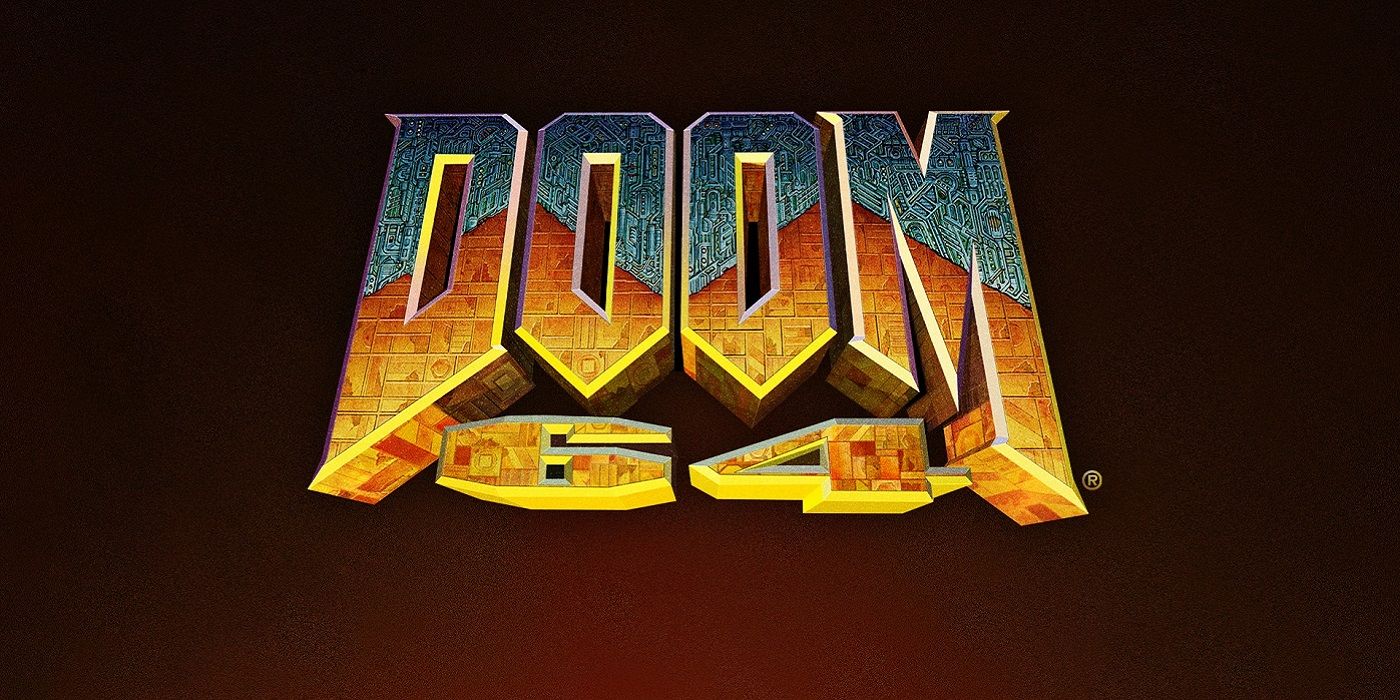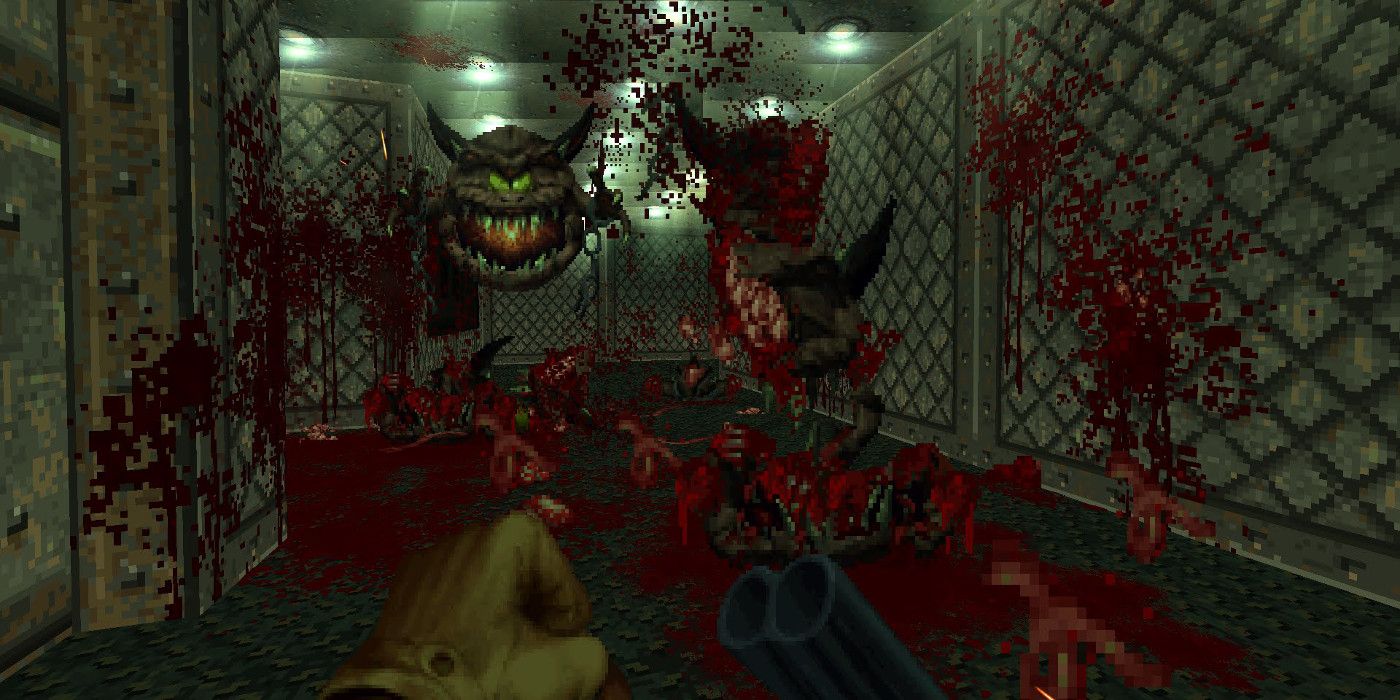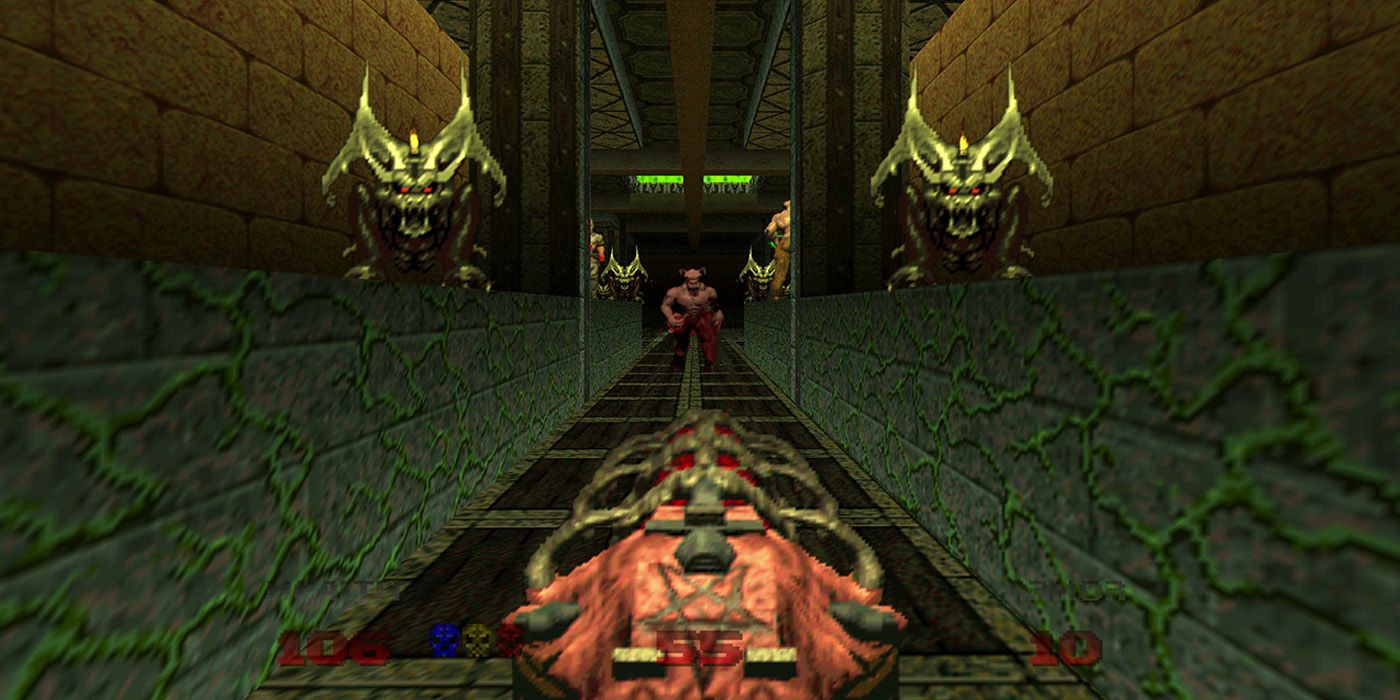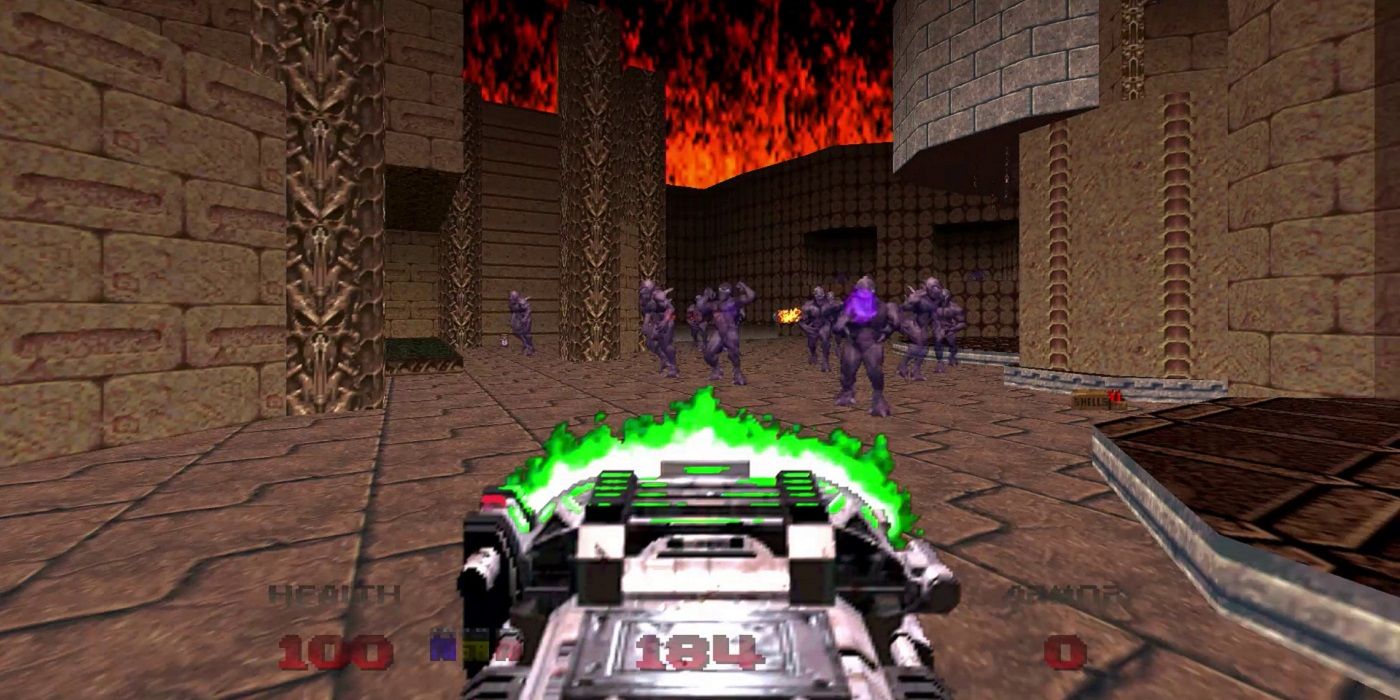Doom 64: How the Forgotten Doom Holds Up Today | Game Rant

Doom Eternal may be getting all of the attention from franchise fans right now, but it's not the only Doom game to get a release recently. NightDive Studios, the same company behind other old-school FPS remasters like System Shock and Turok, has remastered the cult classic Doom 64 for modern platforms, bringing with it a vastly improved performance and some original content to boot.
For one reason or another, Doom 64 doesn't get nearly as much recognition as its predecessors, with many seemingly mistaking it as being a Nintendo 64 port of the original Doom. On the contrary, Doom 64 is a direct followup to Doom 2: Hell on Earth, continuing the plot of that game and effectively providing a conclusion to the story of the original Doom series. It's the only main series Doom game to not have been readily available on modern platforms, so it's nice for fans to be able to play the entire saga without digging their Nintendo 64 out of the closet. However, there are certain aspects about Doom 64 that haven't aged terribly well.
Whereas its predecessors focus almost entirely on combat, Doom 64 puts a much greater emphasis on puzzle solving and exploration. At times, it even feels more like a survival-horror game than a plain first-person shooter, with players having to contend with deadly traps, jump scares, and more while traversing its many levels. Doom 64 still has plenty of demon-shooting, make no mistake, but in general, the game is less hectic and much more atmospheric than other games in the series.

Something about Doom 64 that just hasn't aged well, though, is its archaic checkpoint system, or lack thereof. Dying in any given mission means starting it back from the beginning, which isn't so bad except for the potentially cheap deaths that players will encounter while playing the game. Oftentimes, players won't know about a trap in a room until it kills or severely injures them, meaning that there's a bit of frustrating trial and error when it comes to navigating Doom 64's levels.
Simply getting around the levels is something else that is likely to frustrate fans used to more modern first-person shooter experiences. Doom 64 uses maze-like level design, similarly to its predecessors, and so it's not hard to get lost. There will definitely be times playing Doom 64 when players won't know what to do and will find themselves wandering forever until they finally spot the hidden switch or keycard they need to continue.
Doom 64 is also a very simplistic game, with players just needing to point in enemies' general direction to hit them. There's not much interaction beyond shooting and pressing buttons, and while that's more than enough for fans of older games, it's easy to see how those with more modern sensibilities may be bored by Doom 64's core gameplay.

That's a shame, though, because there really is a lot to like about the game. Doom 64's more survival-horror style makes it instantly stand out from the previous games in the series, and the developers achieve this atmosphere through more than just gameplay. The soundtrack sets the mood, and creature sound effects are used strategically for the occasional jump scare. But what's really impressive about Doom 64 to this day is its lighting effects, as it uses lighting not just for horror reasons, but as a huge part of its level design.
There are puzzles throughout Doom 64 that rely on the game's lighting effects, like flashing lights that let players know they are standing in a safe spot in a hallway full of deadly environmental hazards. Other times, players have to collect special goggles to better illuminate dark rooms, or they will press a switch that will wash a hallway with bright blue light. The visuals in Doom 64 really pop, and NightDive Studios did a great job of making sure everything looks crisp and clear on modern platforms. Visually, the game is still very clearly something that originated on the Nintendo 64, but it everything looks much smoother and brighter.
It's also worth pointing out that the Doom 64 remaster is cheap at just $4.99, and it comes with quite a bit of content. Just like the original game, Doom 64 has 32 main levels to play through, plus plenty of secrets and side content to discover. Better yet, the new version of Doom 64 has even more content than was available in the 1997 version of the game. Developer NightDive Studios has added a brand new stage to Doom 64 that has an interesting connection to the newer Doom games, though we won't spoil anything for hardcore fans here.

Those who have already played Doom 64 to death need to decide if the new chapter plus the visual and performance upgrades make the remaster worth the price of admission. With the current-gen version of Doom 64 only being $4.99, it's a pretty easy recommendation for fans of the franchise, or anyone who's just looking to revisit the older Doom games. Doom 64 is as good as a modern day port of the game could possibly be, though there are definitely some design choices that, while fairly standard at the time of release, just haven't aged well and can make the game a somewhat frustrating experience at times.
Doom 64 is out now for PC, PS4, Switch, and Xbox One.

Post a Comment